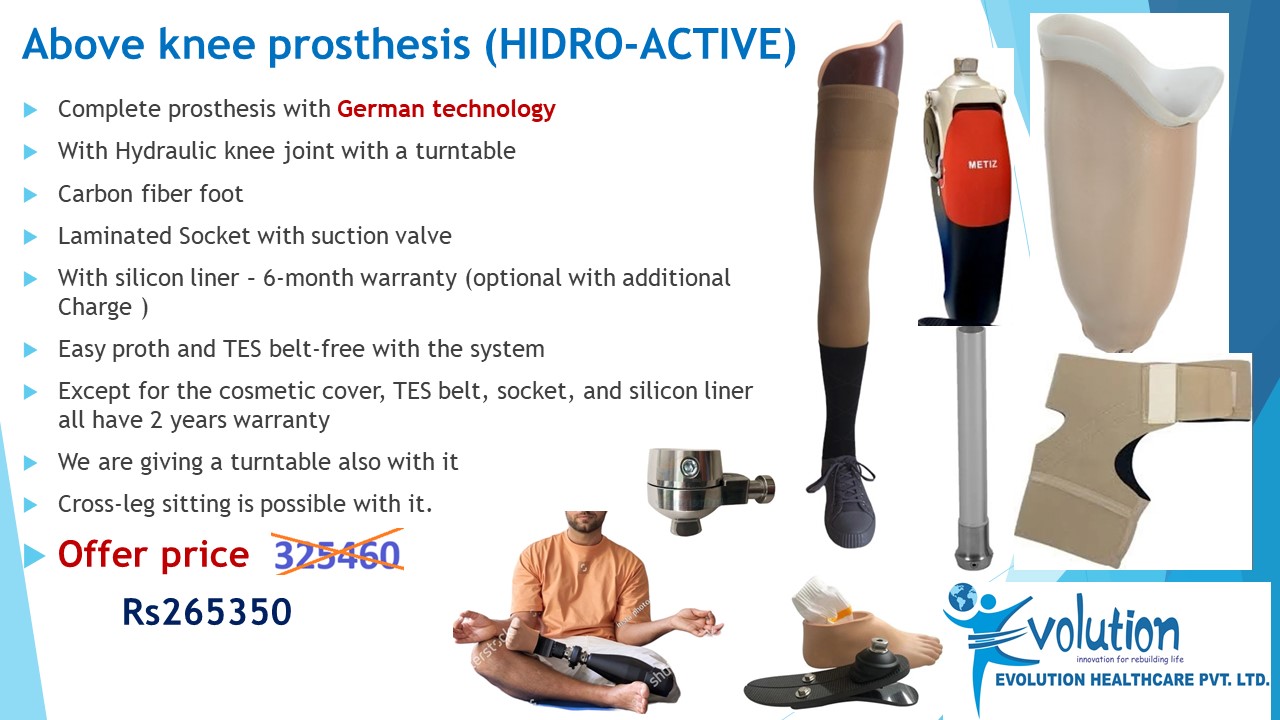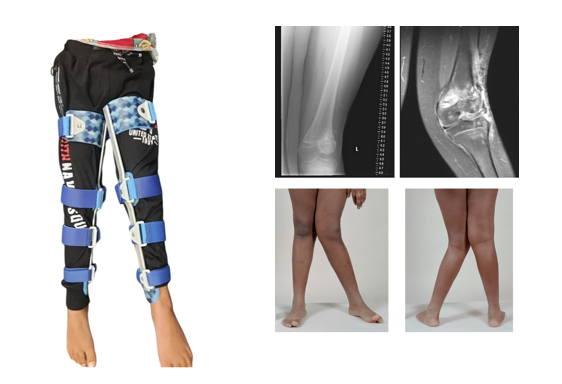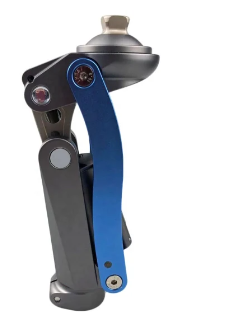Cutting-Edge Prosthetic Limb: Hydraulic Knee Joint, Carbon Fiber Foot, Turntable Looking for a top-of-the-line prosthetic limb? Our advanced model boasts a hydraulic knee joint, carbon fiber foot, and turntable mechanism, offering unmatched performance and comfort. Hydraulic Knee Joint: Our prosthetic features a state-of-the-art hydraulic knee joint, providing smooth, natural movement akin to a real knee. With customizable damping and resistance settings, users can tailor the joint's behaviour to their activity level and terrain, ensuring a perfect fit for every lifestyle. Carbon Fiber Foot: Crafted from lightweight, resilient carbon fiber, our foot component combines strength with agility, ideal for dynamic movements. Anatomically inspired design and flexion points enhance comfort and promote a natural gait, empowering users to move with confidence and ease. Turntable Feature: Unique to our prosthetic limb is the integrated turntable mechanism, granting smooth rotation above the knee joint helping patient to seat with cross leg. Seamless Integration and Control: Our prosthetic limb seamlessly integrates hydraulic, carbon fiber, and turntable components into a unified system. Durability and Maintenance: Built to last, our prosthetic limb withstands daily wear and tear, thanks to durable carbon fiber construction and reliable hydraulic components. Regular servicing by certified professionals ensures optimal performance and longevity, guaranteeing peace of mind for users on the go. Conclusion: In summary, our cutting-edge prosthetic limb sets the standard for innovation and functionality in the industry. With advanced features like hydraulic knee joints, carbon fiber feet, and turntable mechanisms, users experience unparalleled mobility and comfort, empowering them to embrace life's adventures fully.
Send Message








